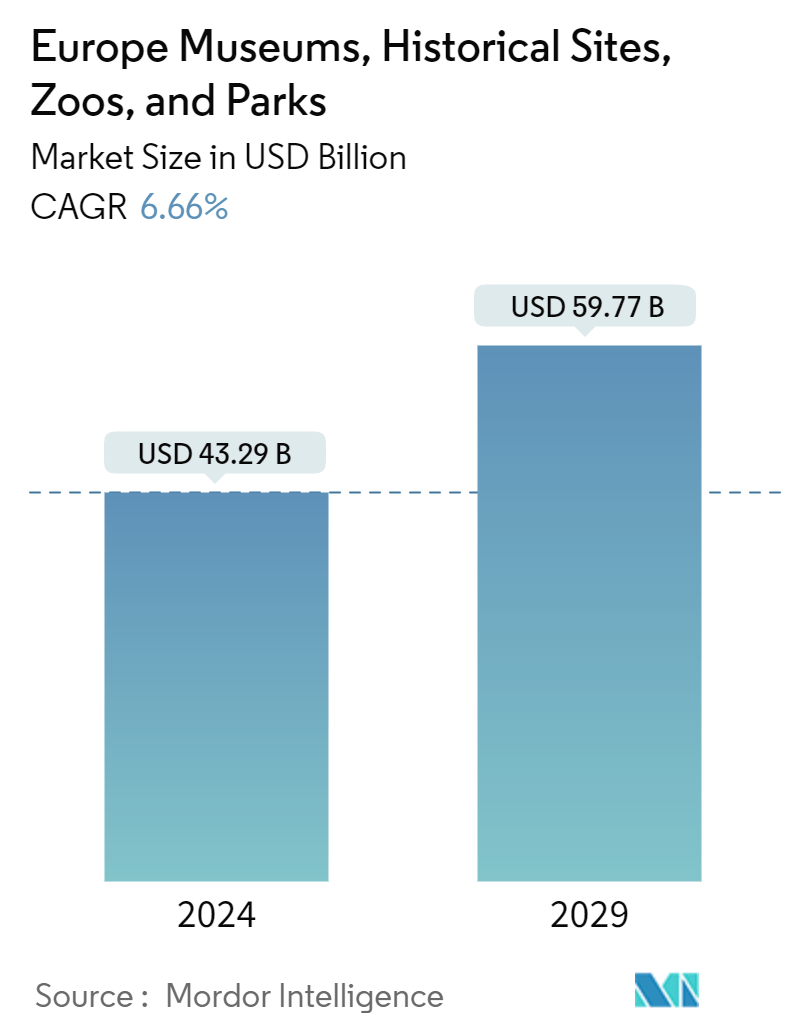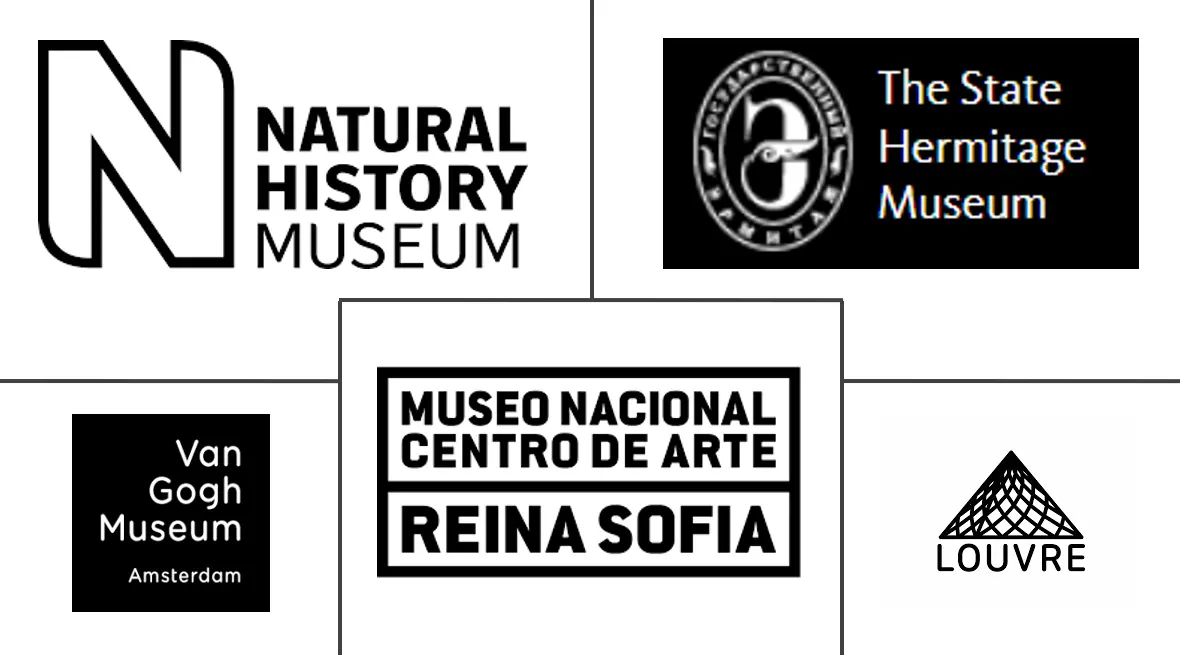Market Size of Europe Museums, Historical Sites, Zoos, And Parks

| Study Period | 2020 - 2029 |
| Base Year For Estimation | 2023 |
| Market Size (2024) | USD 43.29 Billion |
| Market Size (2029) | USD 59.77 Billion |
| CAGR (2024 - 2029) | 6.66 % |
| Market Concentration | Medium |
Major Players
*Disclaimer: Major Players sorted in no particular order |
Need a report that reflects how COVID-19 has impacted this market and its growth?
Europe Museums, Historical Sites, Zoos, And Parks Market Analysis
The Europe Museums, Historical Sites, Zoos, And Parks Market size is estimated at USD 43.29 billion in 2024, and is expected to reach USD 59.77 billion by 2029, growing at a CAGR of 6.66% during the forecast period (2024-2029).
The market is set for significant expansion, fuelled by institutions' integration of digital innovations to stay pertinent in the digital era. This entails facilitating virtual exploration of exhibits and delivering educational experiences to individuals, including students who may be unable to venture outside their classrooms.
A major driver of market growth is the relaxation of governmental restrictions worldwide, leading to an uptick in visitor numbers to museums, historical sites, zoos, and parks. Additionally, the adoption of digital technologies enhances the accessibility of these attractions, amplifying their reach beyond physical boundaries and catering to a broader audience base. Furthermore, the surge in global travel activity indirectly contributes to market expansion, as tourists seek cultural enrichment and wildlife experiences.
Furthermore, zoos are adapting to evolving societal attitudes and ethical concerns regarding animal welfare. Efforts are underway to reshape visitor experiences by prioritizing the well-being of animals. Various zoos are implementing innovative concepts, such as the Philadelphia Zoo's zoo360 initiative, which includes features like the Big Cat crossing. These changes align with the advocacy for animal rights and contribute to the sustainability and relevance of zoos in the modern era.
In conclusion, the market is witnessing dynamic growth fuelled by factors such as the adoption of digitalization, relaxation of restrictions, and evolving approaches to animal welfare. By considering these trends and implementing innovative strategies, institutions can ensure their continued relevance and appeal to visitors in the years ahead.
